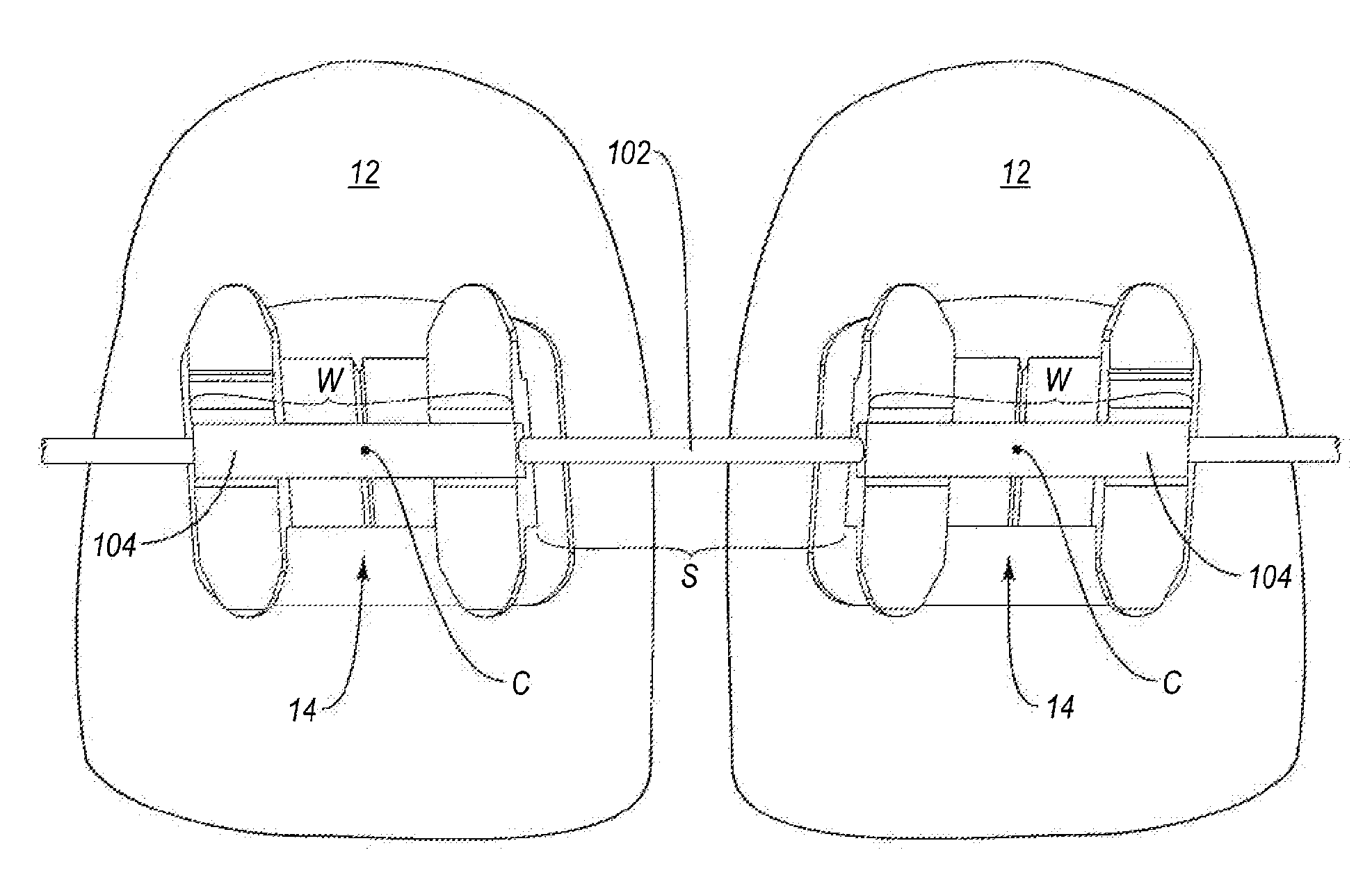Customized Orthodontic Arch Wire Manufactured Using Model of Patient's Teeth
a technology teeth, which is applied in the field of custom-made arch wires, can solve the problems of losing the ability of typical arch wires to effectively transfer force to the bracket and teeth, and achieve the effect of greater cross-sectional width of engagement blocks and better engagemen
- Summary
- Abstract
- Description
- Claims
- Application Information
AI Technical Summary
Benefits of technology
Problems solved by technology
Method used
Image
Examples
Embodiment Construction
I. Introduction
[0035]In one embodiment of the present method, a physical or electronic custom model of the patient's dental arch is obtained and used to manufacture a customized arch wire having a size and spacing between engagement blocks that match the patient's unique dentition. Based on the custom model, a corrected, final position of the patient's teeth is determined. A custom arch wire is then formed by reference to the custom model so that the arch wire specifications are as dictated by the custom model. For example, the appropriate length of the core wire and the particular positioning (i.e., spacing) of each engagement block along the core wire is determined by reference to the custom model. As such, the manufactured custom arch wire is specifically customized for the use of an individual patient.
II. Exemplary Customized Low Force Orthodontic Arch Wires
[0036]FIG. 1A illustrates an exemplary custom model 10 of a patient's dental arch. The custom model may be obtained by taki...
PUM
 Login to View More
Login to View More Abstract
Description
Claims
Application Information
 Login to View More
Login to View More - R&D
- Intellectual Property
- Life Sciences
- Materials
- Tech Scout
- Unparalleled Data Quality
- Higher Quality Content
- 60% Fewer Hallucinations
Browse by: Latest US Patents, China's latest patents, Technical Efficacy Thesaurus, Application Domain, Technology Topic, Popular Technical Reports.
© 2025 PatSnap. All rights reserved.Legal|Privacy policy|Modern Slavery Act Transparency Statement|Sitemap|About US| Contact US: help@patsnap.com



